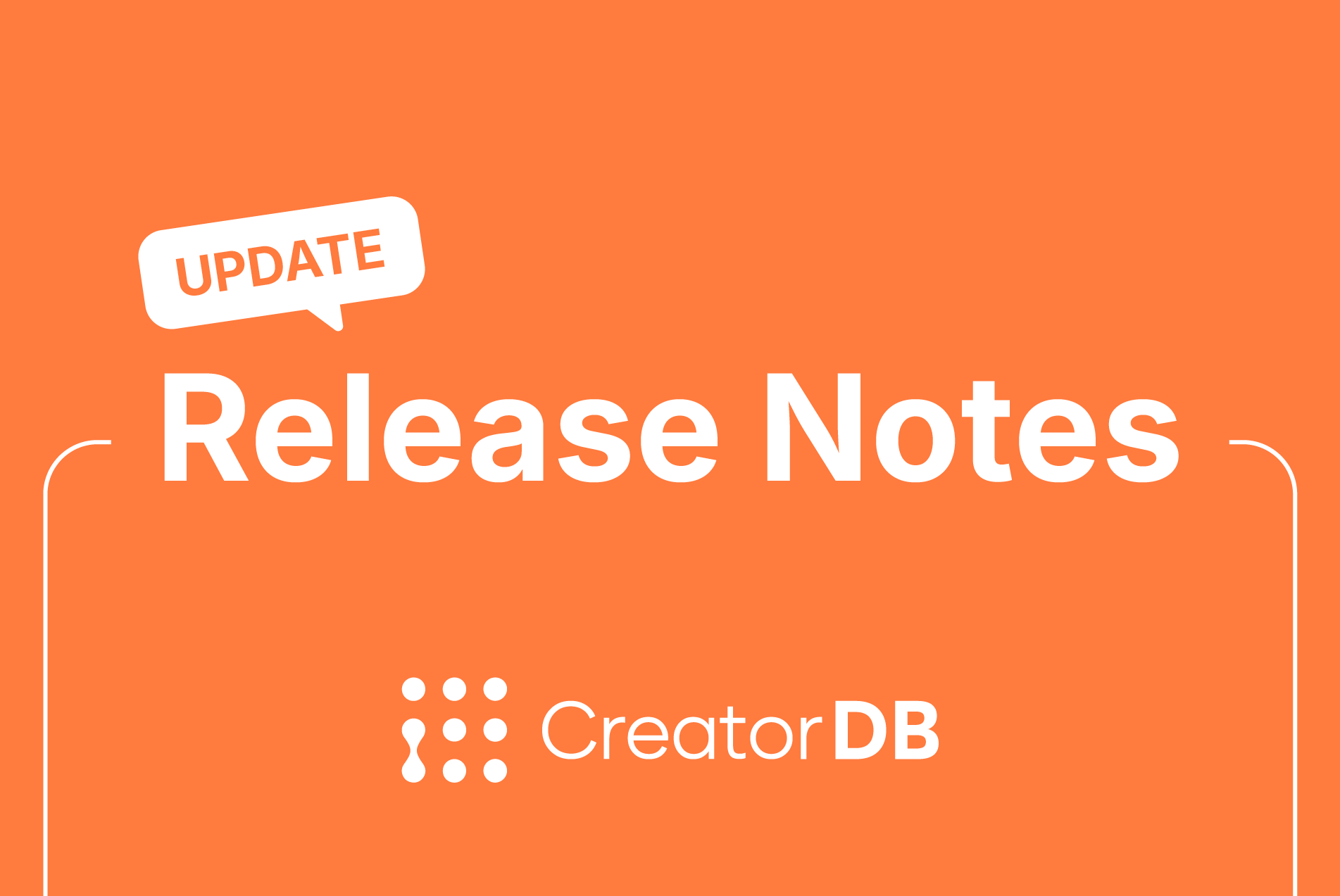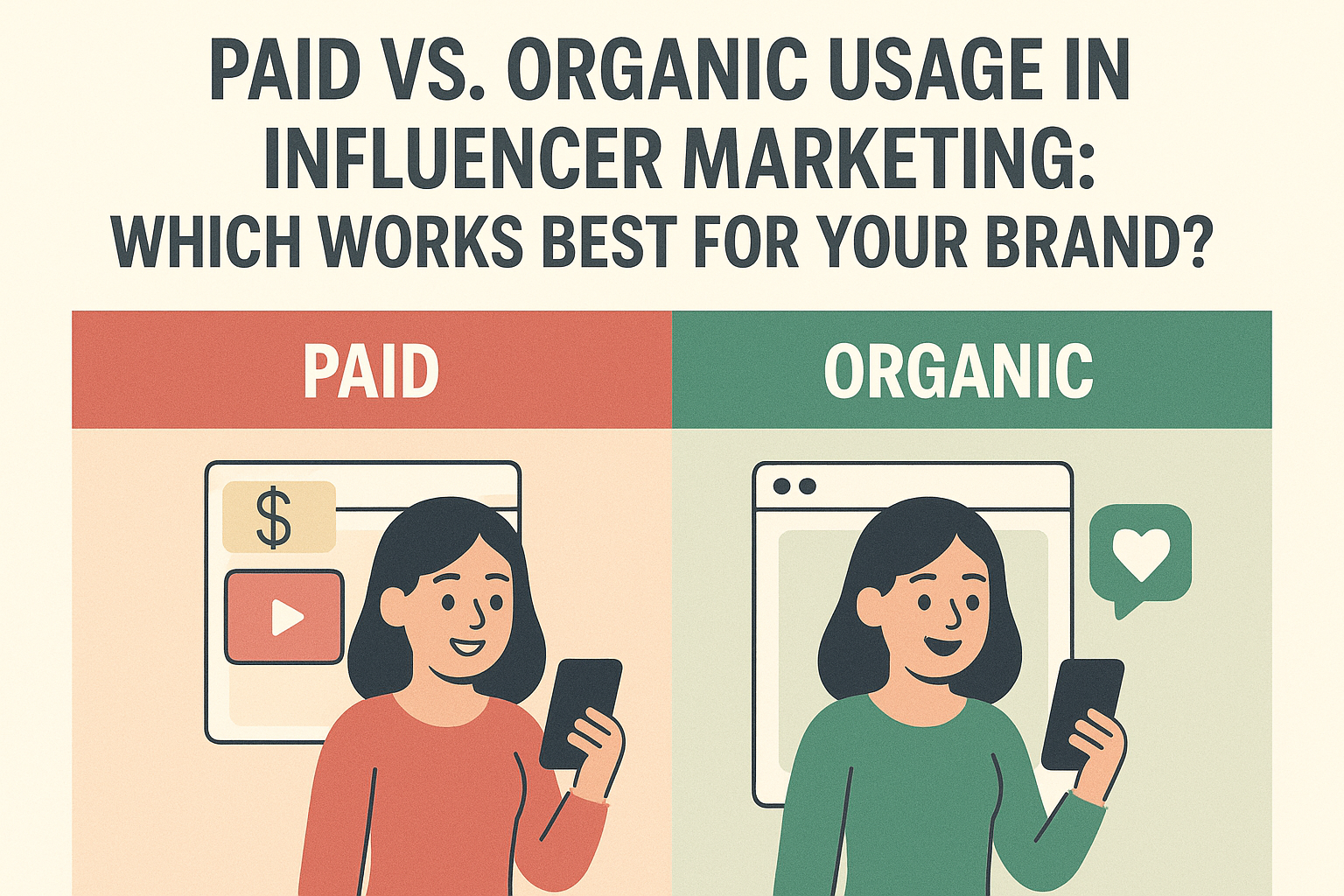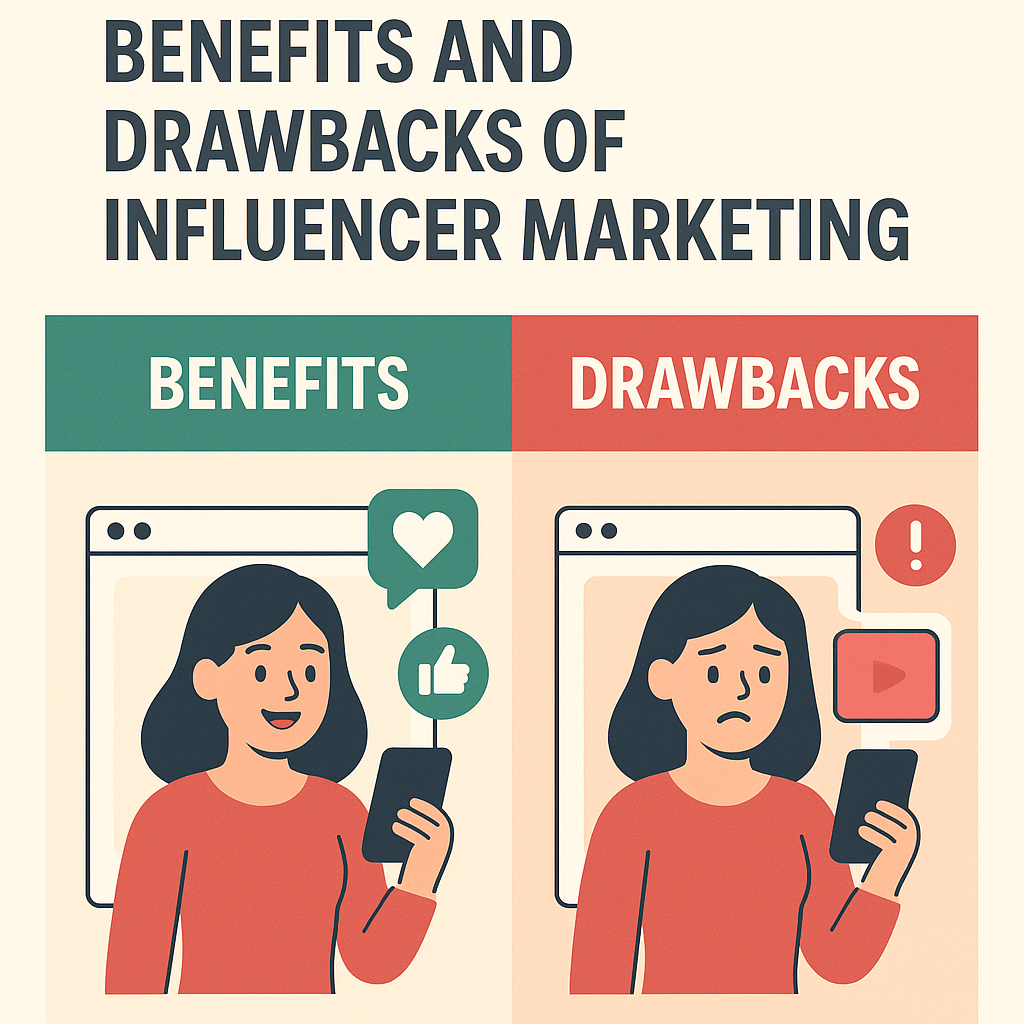It’s very common to see pre-registration campaigns for mobile games nowadays. Mostly, they generate hype in gamer communities to drive interest and expectations about the game.
With influencer marketing and social media user-generated content, pre-registration campaigns expand the reach further and show the community already built around it.
Why pre-registration and influencer marketing
Mobile games benefit from pre-registration as a way to generate early interest in the launch, establish a community, and incentivize participation and interactions with other marketing initiatives. Particularly in the case of games with prominent multiplayer features a community involved right off the bat is going to be a huge help to the success of the project.
Influencer marketing uses influencers in relevant communities to promote products or services less invasively than other marketing channels. Because influencer marketing relies on people who are organically followed for their content and have built their reputation in a field, it can target particular niches and allow them to access these audiences and engage with them.
Combining a pre-registration campaign with influencers’ involvement will provide the best of both worlds and reach success as soon as the game launches. But in order to do it right, you need to consider a few things beforehand.
In the following paragraphs, we will illustrate step-by-step tactics on how to ace the game.
Define the right audience
A successful marketing campaign starts with precise audience targeting. Both pre-registration and influencer marketing campaigns are rooted in catering to specific audience needs and preferences.
In the gaming world, understanding the motivations of different player communities is key. European gamers, for example, are often motivated by discounts, while APAC players value exclusive in-game items. Such insights are essential in crafting campaigns that resonate and engage effectively.
Once the audience is identified and understood, finding the right influencers becomes the next step. Platforms like CreatorDB are instrumental, offering a streamlined process to connect with influencers who align with your audience’s characteristics and campaign goals.

Find Your
Perfect Influencer
Match Instantly
What are the key factors to define the right audience for your game?
1. Game Genre and Style:
- Type: Whether it’s a strategy, RPG, puzzle, sports, or another genre, different styles appeal to different audiences.
- Graphics Style: Realistic, cartoonish, or abstract visuals can attract varied age groups and preferences.
2. Player Demographics:
- Age: Games should be appropriate for the age group they’re targeting, considering content, complexity, and themes.
- Gender: While many games are universal, some are tailored to attract a specific gender.
- Location: Cultural preferences, languages, and regional trends can influence game popularity.
3. Player Psychographics:
- Interests: Hobbies, activities, and interests can guide the game’s theme and features.
- Values: Aligning the game’s message with players’ values can create a strong connection.
4. Gameplay Complexity:
- Skill Level: Catering to beginners, intermediate players, or experts.
- Learning Curve: The ease of learning should match the audience’s patience and interest levels.
5. Monetization Strategy:
- Purchasing Power: The audience’s ability to make in-game purchases.
- Ad Tolerance: Understanding the threshold for ad tolerance can influence the monetization approach.
6. Technology Accessibility:
- Device Usage: The types of devices your audience uses, such as smartphones, PCs, or consoles.
- Internet Accessibility: The quality and speed of the internet can impact online multiplayer games.
7. Community and Social Engagement:
- Social Integration: The role of social features and community engagement in the gaming experience.
- Content Creation: The potential for user-generated content and sharing.
8. Competitor Analysis:
- Market Trends: Understanding what similar games are doing and their audience.
- Gaps and Opportunities: Identifying unmet needs or oversaturated markets.
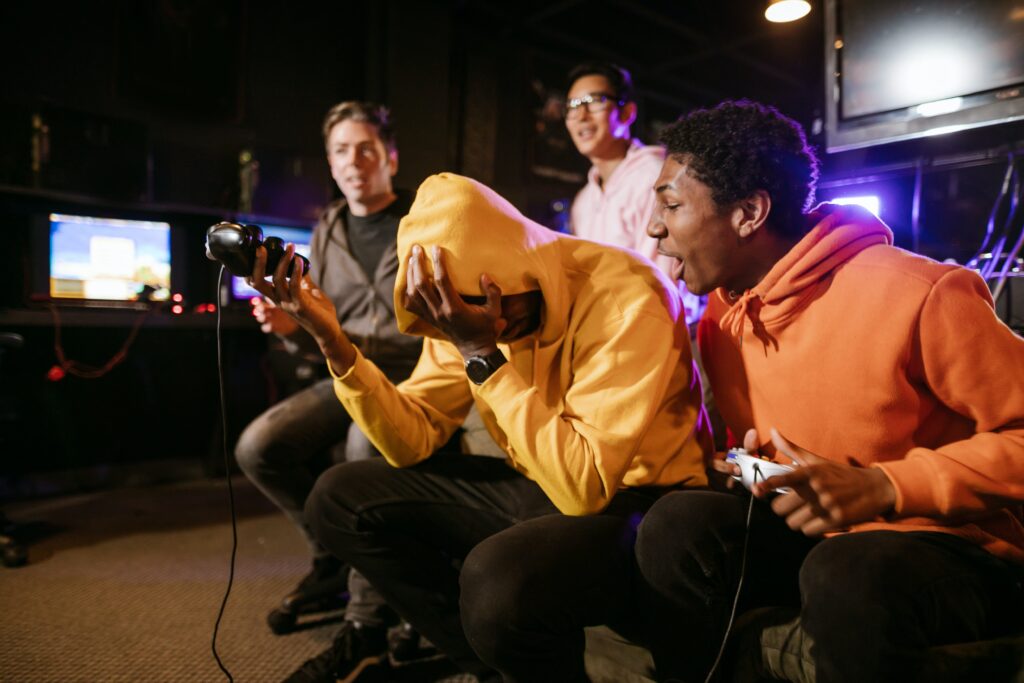
How to use influencers for boosting pre-registrations?
Setting clear goals is a prerequisite in tailoring your marketing campaign to the target audience. In game pre-registration campaigns, setting a user quota is a common practice. The choice of influencers, ranging from big names with millions of followers to smaller content creators, plays a pivotal role.
Influencer Size: Pros and Cons
Big Influencers:
- Pros: Larger reach, widespread visibility.
- Cons: Often lower engagement rates, broader demographics, more expensive.
Small Creators:
- Pros: Higher engagement, dedicated followers, niche focus, cheaper.
- Cons: Limited reach.
When aiming to penetrate specific groups or demographics, the niche focus of small creators can be invaluable. You can delve deeper into the world of micro-influencers here.
Crafting the Message
The choice of influencers should align with your campaign goals and target audience. Messaging strategy in influencer marketing hinges on a delicate balance. While unity in messaging amplifies brand recognition and campaign coherence, flexibility is key.
Tips for Effective Messaging:
- Adaptability: Allow influencers creative liberty to tailor messages that resonate with their specific audiences.
- Consistency: Maintain core messaging elements for brand consistency across all content pieces.
- Alignment: Ensure the influencer’s style aligns with the game’s branding and content.
The synergy of a well-defined audience, clear goals, the right influencers, and a flexible yet consistent messaging strategy can significantly amplify the impact of a marketing campaign.
How to launch a pre-registration campaign
In general, a pre-registration campaign should be started 1 to 2 months before the launch of the game to be able to maintain the hype and excitement around the project. For example, Google Play allows games to be searchable in the app store and in pre-registration for up to 90 days, even if many large studios seem to be given extensions.
Since the pre-registration campaign is a prolonged effort, it is important to be able to have a sustained push when it comes to marketing. Activating many relevant small content creators during the campaign is perfect to keep the target audience engaged with the game and in the loop of the launch.
Generate buzz through influencers to improve pre-registration
Pre-registration campaigns are proven to lead to higher daily installs and improved day-one to day-seven retention.
By promoting pre-registration through relevant influencers, it’s possible to mobilize and engage with online communities. Doing so the marketing message would be amplified and have a great chance to gain traction.
In order to better attract interest and registrations is helpful to offer exclusive content or discounts for the ones that participate in the pre-registration. This approach can be taken a step further by including content tailored around the influencers’ likings or signature traits.
Including and encouraging user-generated content in your campaign is another good approach to extend the buzz around the campaign and boost audience involvement and community-building efforts.
Sharing early access or game demos with the influencers is another crucial way to generate hype around your game and drive in pre-registering users.
Showing off parts of your game can give your audience a sense of what will be and create excitement and anticipation.
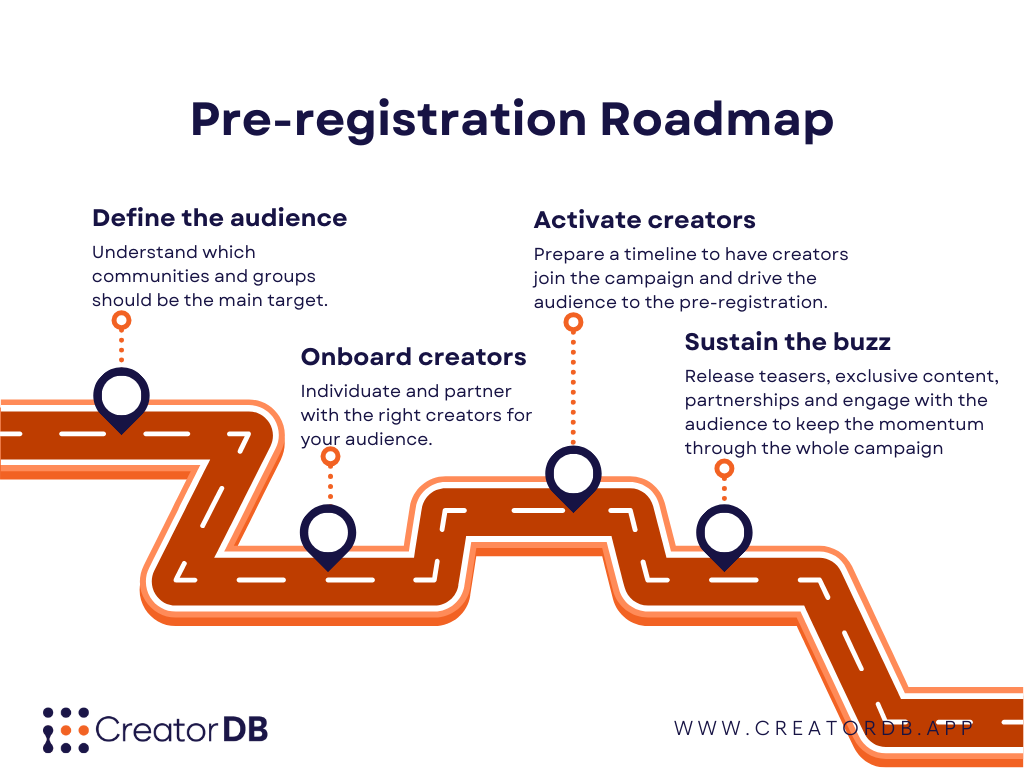
Conclusion
In conclusion, a pre-registration marketing campaign can be an excellent tool for mobile game launch since it enhances the game’s visibility and works towards establishing a community around the game even before it has been found.
They can be boosted by collaborating with influencers, which is especially important since they can work towards mobilizing online communities and groups to participate in your game or marketing campaign actively.
That’s why we at CreatorDB offer a series of services that can accommodate your needs: our proprietary software will help you identify the right influencers in no time. But if you are looking for a more hands-off approach, our agency team can deliver end-to-end influencer marketing campaigns across the globe.
They flaunt expertise in 10 of the most spoken languages in the world and are used to individuate contact and manage content creators for our clients. Contact us to learn more about what influencer marketing can do for you.

